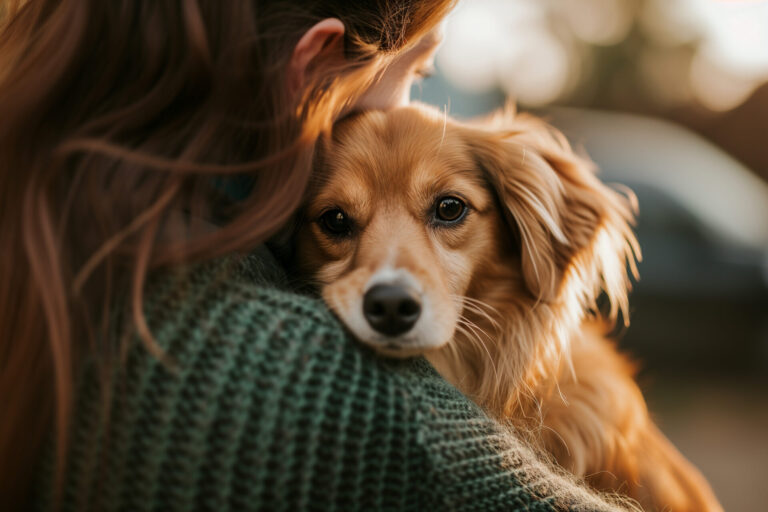Separation anxiety is a common issue for many dogs, but our beloved Lhasa Apsos can take it to a whole new level. As the proud family of our sweet and slightly dramatic Lhasa, Poppy, we’ve navigated the rollercoaster of barking tantrums, mysterious shoe (& sock!?) destruction, and those soulful, guilt-inducing eyes. If your Lhasa Apso turns into a tiny drama queen whenever you leave the house, you’re not alone. Here’s how to tackle this tricky issue head-on, with practical tips, heartfelt advice, and carefully chosen product recommendations from VioVet to make life easier (and quieter).
What is separation anxiety in dogs?
Separation anxiety is a common behavioural problem in dogs, triggered by the fear of being alone. Dogs are naturally pack animals, viewing their humans as vital pack members. Because of this instinctive bond, they find being alone stressful and frightening. Dogs have evolved over thousands of years to spend the majority of their time with humans, and some dogs become so attached that even short periods alone create significant stress and anxiety.
Recognising separation anxiety in your Lhasa Apso
Lhasas are known for their deep attachment to their humans—it’s part of what makes them so lovable. But this trait can also make them prone to anxiety when they’re left alone.
Common signs include:
- Excessive barking or whining
- Chewing and destructive behavior
- Pacing or restlessness
- Accidents indoors (even if fully house-trained)
- Loss of appetite when alone
Understanding these symptoms is your first step to helping your furry companion.
Practical tips to ease anxiety
1. Create a calm departure routine
Dogs sense when you’re about to leave. Change the cues by calmly picking up your keys or putting on your coat at random times without leaving. This can reduce anxiety triggers.
2. Make your exits uneventful
When leaving and returning home, remain calm and quiet. This reassures your Lhasa Apso that coming and going isn’t a big deal.
3. Gradual departures
Start by leaving your dog alone for short periods—just a few minutes—and gradually increase the duration. This teaches your Lhasa that being alone is safe.
4. Establish a comforting routine
Dogs love predictability. Regular feeding, walking, and playtime schedules can provide security and reduce anxiety.
Products that help reduce anxiety in Lhasa Apsos
Supporting your Lhasa with calming products can significantly ease their anxiety. Here are some tried-and-tested favourites available from VioVet.
It is important to note that while calming supplements and anxiety-relief products can be wonderfully helpful for some dogs, it’s good to remember they’re not guaranteed to be effective for every pup. Each Lhasa Apso is unique (we certainly know ours is!), and if you have specific concerns or notice persistent issues, it’s always worth speaking to a veterinarian or a professional dog behaviourist for tailored advice. That said… onto some products that you may find helpful.
Calming supplements
- Zylkene: A natural, non-sedative calming supplement derived from milk proteins. Ideal for both short-term stressors and ongoing anxiety support.
- YuCALM Dog: Contains natural ingredients like lemon balm and L-Theanine, helping to soothe anxiety without causing drowsiness.
Anxiety-reducing wearables
- KONG Anxiety Reducing Shirt: Offers gentle, calming pressure similar to a comforting hug. It’s perfect for dogs who need reassurance.
- Petlife KarmaWrap: Designed to provide consistent, calming pressure, it helps your dog feel secure and comfortable.
Comforting toys and distractions
- Aromadog™ Calm Fleece Toy: Infused with calming essential oils, this soft, comforting toy helps ease your dog’s anxiety through scent.
- KONG Classic Toy: Stuff this durable rubber toy with your dog’s favourite treats or peanut butter to keep them occupied while you’re out.
Calming diffusers
- Adaptil Calm Diffuser: Continuously emits calming pheromones, ideal for creating a peaceful environment.
Create a comforting space
Set up a special spot where your Lhasa Apso feels safe:
- Comfortable bed with blankets
- Favourite toys nearby
- An item carrying your scent, such as an old shirt or pillowcase
Take a trip to your veterinary practice
If your dog is really experiencing severe separation anxiety then you may need to consult your local vet. It could lead to your dog being prescribed medication, so this may be your last resort after you’ve tried other natural methods. Ideally you need to address the root cause and make behavioural changes, as medication will not necessarily solve any underlying issue. Always consult your vet first if you are concerned about your dog’s behaviour or health.
Final thoughts
Managing your Lhasa Apso’s separation anxiety takes patience, consistency, and a good measure of love. With these practical strategies, comforting products, and maybe an extra treat or two (Poppy insists!), you’ll help your furry friend feel safer and happier when you’re not around.
And remember, every small improvement is a victory, so celebrate those quiet departures and intact shoes! Happy tails and happier homes are possible, even with the most emotionally invested Lhasa Apso.
Important information
Information provided by LhasaLife should not be taken as professional veterinary advice or clinical advice. It is important to consult a licensed veterinarian for any health concerns or issues with your pet. The content of the article How to deal with separation anxiety in your Lhasa Apso should not be used as a substitute for veterinary care, or treatment advice for you or your pet, and any reliance on this information is solely at your own risk.
This article may contain affiliate links, meaning we may earn a small commission at no extra cost to you if you purchase through these links. Affiliate links do not necessarily imply an endorsement of the product by LhasaLife. However, we only share products we believe could be helpful to you and your beloved Lhasa Apso. Your support helps us keep the website running and full of useful content.



